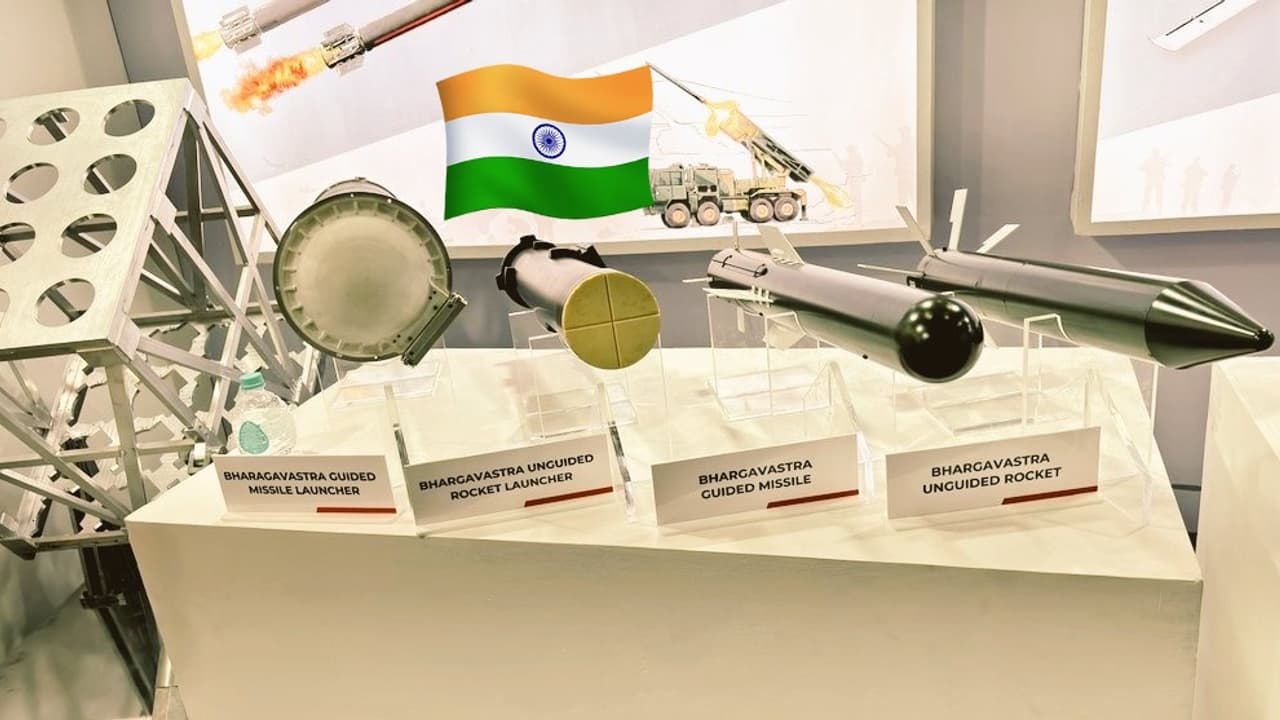India has taken a giant leap in modern warfare with Bhargavastra, a homegrown, low-cost counter-drone system developed by Economic Explosives Ltd (EEL), a subsidiary of Solar Group.
India has taken a giant leap in modern warfare with Bhargavastra, a homegrown, low-cost counter-drone system developed by Economic Explosives Ltd (EEL), a subsidiary of Solar Group. Successfully tested on May 13, 2025, at Gopalpur’s Seaward Firing Range, this state-of-the-art weapon neutralised drone swarms with precision. Alongside India’s strategic deployment of drones during Operation Sindoor, launched in response to the April 22 terror attack in Pahalgam, Bhargavastra has positioned India as a global leader in drone warfare.

This twin approach—combining drone strikes with anti-drone defence—has reshaped India’s battlefield readiness, enhancing both offensive and defensive capabilities.
Bhargavastra: India’s Drone-Killing Shield
Bhargavastra acts like an eagle, spotting and eliminating hostile drones before they strike. It has a two-tier kill mechanism:
First Layer: Fires unguided micro-rockets with a 20-metre blast radius, designed to wipe out drone clusters swiftly.
Second Layer: Launches precision-guided micro-missiles to destroy high-value or evasive aerial targets with surgical accuracy.
What makes Bhargavastra unique is its versatility. It can be upgraded with “soft-kill” features—such as jamming and spoofing—to confuse enemy drones. Its adaptability allows deployment by the Army, Navy, and Air Force, from desert terrain to high-altitude regions like Ladakh, operating efficiently even at altitudes above 5,000 metres.
During its successful trials, supervised by Army Air Defence officials, Bhargavastra executed both single and salvo-mode launches—firing two rockets in just two seconds. All tests met performance targets with direct hits.
Proudly Made in India
Every component—sensors, launchers, and control systems—is developed in India. Equipped with advanced radar, electro-optical cameras, and RF receivers, Bhargavastra detects small and incoming drones up to 2.5 km away and identifies threats using radar detection up to 6 km, with enhanced tracking through optical and RF systems.
At the heart of the system lies a C4I-powered Command-and-Control Centre (Command, Control, Communications, Computers, and Intelligence), ensuring seamless coordination. It fits perfectly into India’s network-centric warfare model, boosting situational awareness and rapid response.
Drones in Operation Sindoor: A New Era of Warfare
Operation Sindoor, launched on May 7, was India’s bold retaliation to the April 22 Pahalgam attack, which killed 26 civilians. The tri-service mission saw the Indian Army, Air Force, and Navy strike nine terror hubs across Pakistan and Pakistan-occupied Kashmir (PoK).
For the first time, drones played a central role. India deployed SkyStriker kamikaze drones—co-developed by Adani Group’s Alpha Design Technologies and Israel’s Elbit Systems—to surgically hit targets. These Bengaluru-made drones, with a 100 km range and 5–10 kg warheads, demonstrated precision and cost-effectiveness.
Pakistan’s response was a massive drone swarm—nearly 400 drones, including Turkish-made SONGAR variants—targeting 26 locations across India, from Leh to Sir Creek. These attacks hit military bases and civilian zones, injuring people in Punjab’s Ferozepur. However, India’s layered air defence—including Bhargavastra—intercepted over 600 aerial threats within six days.
India also deployed high-energy lasers and its own drones to destroy enemy swarms, marking a shift from conventional to high-tech warfare.
A Technological Turning Point
India’s LMS kamikaze drones—developed with DRDO—used thermal imaging, AI navigation, and NTRO-supplied real-time data to hit targets without collateral damage. Over 100 terrorists were neutralised in the nine strikes.
These capabilities show that drones are not just surveillance tools—they are decisive military assets. Bhargavastra addresses this threat affordably and efficiently, making India the first country to field such a flexible, indigenous counter-swarm solution.
Setting a Global Benchmark
India’s performance in Operation Sindoor—striking terror camps with drones and blocking enemy swarms—showcases a balanced military posture. Social media buzzed with praise for Bhargavastra, calling it a “nightmare” for Turkish and Chinese drones. Prime Minister Narendra Modi termed Operation Sindoor the “new normal” in India’s counter-terrorism doctrine.
A Symbol of Atmanirbharta (Self-Reliance)
Bhargavastra is not just a defence system; it’s a symbol of Indian ingenuity. With EEL, DRDO, and Adani Group working in tandem, India has built a robust and scalable solution to modern aerial threats.
As drone warfare redefines battlefields globally, from Ukraine to Gaza, India stands at the forefront with Bhargavastra. This is not just a technological triumph—it’s a national milestone.
India’s future battles won’t just be fought with guns and tanks—but with brains, bytes, and brilliant homegrown tech like Bhargavastra.
(Girish Linganna is an award-winning science writer and Defence, Aerospace & Geopolitical Analyst based in Bengaluru. He is also Director of ADD Engineering Components India Pvt. Ltd., a subsidiary of ADD Engineering GmbH, Germany. Contact: girishlinganna@gmail.com)


